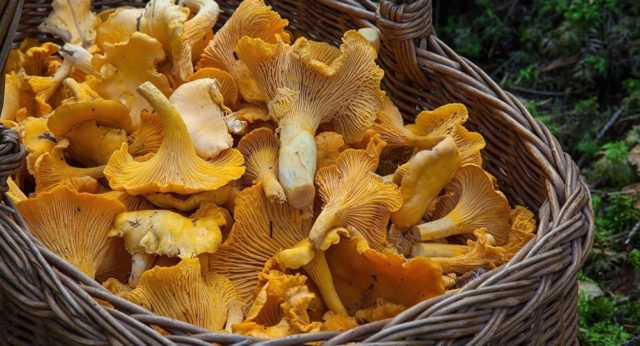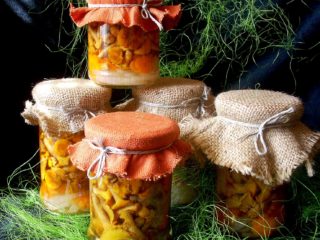Chanterelles are never wormy - all mushroom pickers know this. They are very pleasant to collect; there is no need to look at every chanterelle, whether it is good or wormy. They do not dry out in hot weather and do not absorb much moisture in rainy weather. They are also very convenient to transport, they do not wrinkle.
Are chanterelles wormy?
Chanterelles grow from June until autumn. As a rule, there are entire families. In one place you can pick up quite a lot of mushrooms, since they are not wormy.
The chanterelle has both a cap and a leg, but they are not separated, but form a single whole. The leg may be slightly lighter than the cap. The skin practically does not separate from the pulp. The inner part of the pulp is dense, fibrous in the stem. It has a sour taste and smell of roots or fruits. In the forest they are visible from afar due to their bright yellow color.
Chanterelles are not wormy. However, there is isolated evidence that sometimes very old mushrooms are still affected by worms. This is explained by the fact that the resistance to parasites in such specimens is reduced, which is why the worms settle in them. There have been isolated cases of worm-eaten chanterelles in hot weather. The worms infect the stem and central part of the cap.
Experienced mushroom pickers recommend following these rules when collecting:
- Do not take flabby, lethargic or overgrown specimens, because they may be wormy.
- You should not take those that have mold on them.
- You cannot collect chanterelles along roads and power lines.
Chanterelles can be stored fresh for a long time; they will not develop worms. Before use, they must be thoroughly washed, especially the lower part of the cap.
Why worms don't eat chanterelle mushrooms
Chanterelles are not worm-bearing due to their chemical composition. An organic substance called quinomannose was found in their pulp. The substance is also called chitinmannose, D-mannose. The pulp also contains beta-glucan. These are certain forms of polysaccharides - natural compounds found in chanterelles.
When worms penetrate the mushroom, quinomannose envelops and blocks them, acting on the nerve centers. Parasites lose the ability to breathe and move. This leads to their death. Even insect pests do not lay eggs in the pulp of the mushroom.
D-mannose, entering the human body, has a detrimental effect on the eggs of worms and the helminths themselves. Further fermentation of the substance in the large intestine leads to the synthesis of fatty acids. They dissolve the shell of helminth eggs, as a result of which the parasites die.
This substance does not have any negative effect on the human body.
Beta-glucan activates the body's defense system. The result is the formation of an increased content of leukocytes. They destroy foreign protein structures.
The worms have no chance to survive in the pulp, and even to reproduce. That's why worms don't eat chanterelles. We can say that everything is happening the other way around. The mushroom destroys uninvited guests.It is assumed that chanterelles growing in different areas may contain different amounts of quinomannose, which is why they are sometimes wormy.
This natural substance is destroyed during heat treatment, already at +50 degrees. Salt also destroys it. Alcohol reduces the quinomannose content over time. Therefore, it is recommended to use mushroom-based powder for medicinal purposes. A natural remedy against helminths is better than pharmaceutical drugs, since it acts not only on mature worms, but also on their eggs.
Chanterelles are classified as lamellar mushrooms. They contain quinomannose. In some - more, in others - less.
In addition to quinomannose, other beneficial substances have been found:
- 8 amino acids, which are classified as essential;
- vitamins, including vitamin A, which is more abundant than in carrots;
- carbohydrates;
- natural antibiotics;
- fatty acid;
- trametonolinic acid, which acts on hepatitis viruses;
- ergosterol restores liver cells;
- minerals and others.
Due to the content of useful substances, chanterelles have valuable properties:
- Antihelminthic. Thanks to quinomannosis, helminths and their eggs are destroyed.
- Anti-inflammatory.
- Bactericidal.
- Antitumor.
- Restorative. Helps restore vision.
Conclusion
Chanterelles are not wormy - this attracts lovers of quiet hunting. But you still need to remember that you can take strong, young specimens, and not large and old ones. Since in rare cases they are still wormy.










